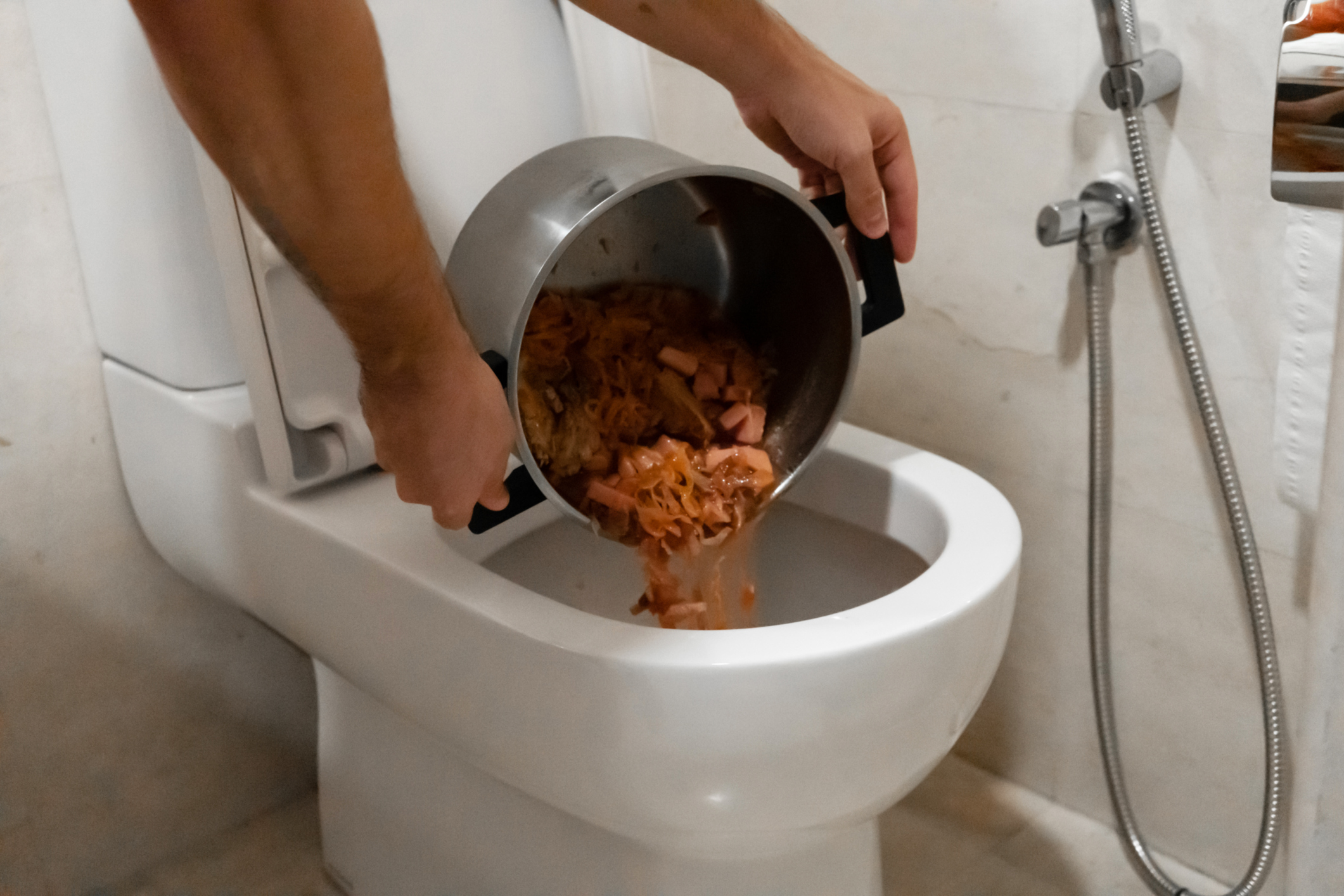Are You Capable to Dispose of Food in the Toilet?
Are You Capable to Dispose of Food in the Toilet?
Blog Article
They are making a few great points related to Is it safe to flush food (especially rice) down the toilet? overall in the content directly below.

Intro
Many people are typically faced with the dilemma of what to do with food waste, specifically when it concerns leftovers or scraps. One typical inquiry that occurs is whether it's all right to flush food down the toilet. In this post, we'll look into the reasons why people could consider flushing food, the consequences of doing so, and alternate techniques for appropriate disposal.
Reasons individuals may take into consideration purging food
Lack of understanding
Some individuals may not know the prospective damage brought on by flushing food down the toilet. They may erroneously believe that it's a safe method.
Benefit
Flushing food down the commode might look like a quick and easy option to getting rid of unwanted scraps, especially when there's no neighboring trash bin available.
Laziness
In many cases, individuals may simply pick to flush food out of large negligence, without considering the effects of their activities.
Repercussions of flushing food down the toilet
Ecological influence
Food waste that winds up in waterways can add to air pollution and damage water communities. Furthermore, the water made use of to purge food can stress water resources.
Plumbing issues
Purging food can cause clogged pipes and drains pipes, triggering costly plumbing repairs and inconveniences.
Sorts of food that need to not be flushed
Coarse foods
Foods with fibrous appearances such as celery or corn husks can get entangled in pipes and trigger clogs.
Starchy foods
Starchy foods like pasta and rice can take in water and swell, resulting in clogs in pipes.
Oils and fats
Greasy foods like bacon or food preparation oils ought to never ever be flushed down the toilet as they can strengthen and cause clogs.
Appropriate disposal techniques for food waste
Using a waste disposal unit
For homes furnished with garbage disposals, food scraps can be ground up and purged with the plumbing system. Nonetheless, not all foods appropriate for disposal in this manner.
Recycling
Particular food packaging materials can be recycled, decreasing waste and lessening environmental effect.
Composting
Composting is a green means to get rid of food waste. Organic materials can be composted and utilized to improve soil for horticulture.
The relevance of proper waste monitoring
Lowering environmental harm
Appropriate waste administration techniques, such as composting and recycling, help reduce contamination and protect natural deposits for future generations.
Shielding plumbing systems
By avoiding the practice of flushing food down the toilet, property owners can stop pricey pipes repairs and maintain the honesty of their pipes systems.
Conclusion
In conclusion, while it may be appealing to flush food down the bathroom for benefit, it is necessary to recognize the possible repercussions of this activity. By adopting appropriate waste administration practices and taking care of food waste sensibly, people can contribute to much healthier plumbing systems and a cleaner setting for all.
FLUSH FOOD DOWN THE TOILET?
FLUSHING FOOD CAN CAUSE BLOCKED DRAINS IN YOUR HOME
All of the plumbing fixtures in your home are connected to the same sewer pipe outside of your home. This outdoor sewer pipe is responsible for transporting all the wastewater from your home to the Council sewer mains. Even small pieces of food that go down the kitchen sink can cause problems for your sewer. It should therefore be obvious that flushing larger bits of food, such as meat, risks a clog in either the toilet itself or the sewer pipes. Flushing greasy food is even more problematic because oil coagulates when it cools, coating the interior lining of your pipes.
THE TOILET IS NOT A BIN
Food isn’t the only thing that people shouldn’t be flushing down the toilet. People use the toilet to dispose of all kinds of things such as tampons, makeup wipes, dental floss, kitty litter and even underwear. Water goes to great lengths to educate residents about the high costs and stress placed on wastewater treatment systems simply from people flushing the wrong stuff down the toilet. It costs taxpayers millions of dollars each year, and homeowners thousands in blocked drain repairs.
FLUSHING FOOD IS A WASTE OF WATER
Flushing food is a waste of our most precious resource - water. In June this year Level 1 water restrictions were introduced to protect water supply from drought conditions. Much of New South Wales continues to be affected by prolonged drought with recent figures revealing up to 97 per cent of the state remains in drought. Depending on whether you have a single or dual flush toilet, every single flush uses between five and 11 litres of water. In the current climate this is a huge amount of water to be wasting on flushing food that should be placed in the bin (or better yet, the compost).
https://www.jabplumbingsolutions.com.au/blog/can-you-flush-food-down-the-toilet

Hopefully you liked our topic on Is it safe to flush food (especially rice) down the toilet?. Thank you for finding the time to browse our posting. Loved our posting? Please quickly share it. Let someone else locate it. I cherish reading our article about What Can Happen If You Flush Food Down the Toilet?.
Schedule Service Report this page